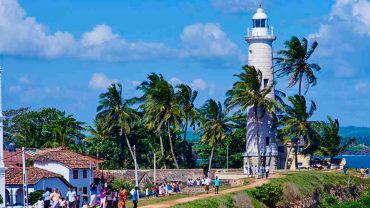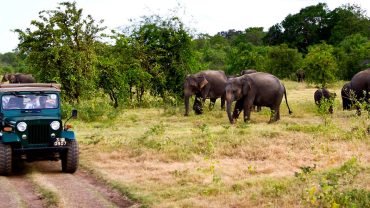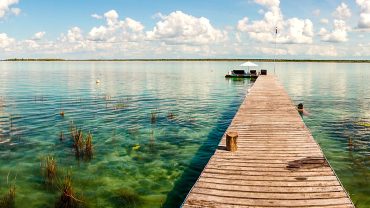Introduction to the Pearl of the Indian Ocean: Your Ultimate Sri Lanka Travel Guide
Welcome to Sri Lanka, often referred to as the “Pearl of the Indian Ocean,” a paradise island teeming with diversity, from its lush green landscapes to pristine beaches. Located just south of India, this stunning island nation offers a unique blend of rich cultural heritage and breathtaking natural wonders, making it a must-visit destination for any avid traveler. In this comprehensive Sri Lanka travel guide, we’ll delve into everything you need to know to make your trip unforgettable, from visa requirements and top destinations to local cuisine and cultural norms.
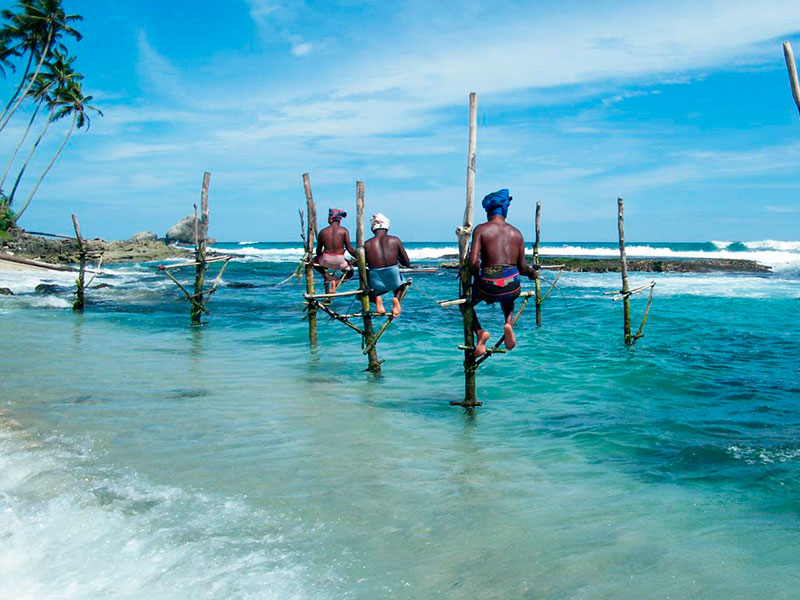
Why Sri Lanka?
Why should Sri Lanka be on your travel bucket list? Our Sri Lanka Travel Guide reveals an extraordinary array of experiences packed into a compact geographical space. Whether you’re an adrenaline junkie seeking outdoor adventures, a nature enthusiast looking to explore exotic wildlife, or a history buff interested in ancient civilizations, Sri Lanka has something for everyone. Picture yourself walking through the misty hills of Nuwara Eliya, affectionately known as ‘Little England,’ or soaking up the sun on the golden sands of Mirissa Beach. How about a thrilling safari through Yala National Park, home to the elusive Sri Lankan leopard? The possibilities are endless.
Strategic Location
Sri Lanka enjoys a strategic location in the heart of the Indian Ocean, making it an accessible destination from various parts of the world. Major international airports such as Bandaranaike International Airport in Colombo and Mattala Rajapaksa International Airport in Hambantota serve as gateways to this tropical paradise.
Diverse Landscapes
The island’s topography is incredibly diverse, offering a smorgasbord of scenic vistas within short distances. Venture into the central highlands, and you’ll be greeted by rolling tea plantations, cascading waterfalls, and mist-covered mountains. Head south, and you’ll find idyllic beaches perfect for surfing, snorkeling, or simply unwinding. From the arid plains of the north to the lush green forests of the central and southern regions, Sri Lanka is a kaleidoscope of natural beauty.
Rich Cultural Heritage
When it comes to cultural richness, Sri Lanka is a treasure trove. With a history spanning over 2,500 years, the island has an abundance of ancient temples, palaces, and cities. Sites like Sigiriya, often called the ‘Eighth Wonder of the World,’ and the Sacred City of Anuradhapura are not just UNESCO World Heritage Sites but also testimonies to Sri Lanka’s glorious past.
Culinary Delights
Sri Lankan cuisine is a tantalizing blend of flavors and aromas, heavily influenced by its history as a spice island and the cultural melting pot that it is. Whether you’re savoring a spicy curry or indulging in a sweet treat like ‘Watalappan,’ the local food scene is sure to delight your palate.
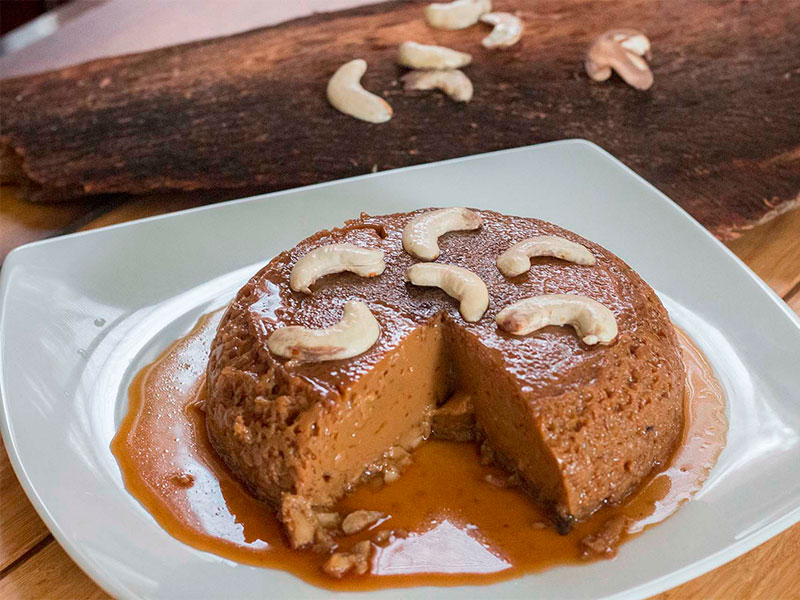
Safety and Hospitality
Safety is a prime concern for any traveler, and Sri Lanka offers a safe and welcoming environment, evidenced by the warm smiles and unparalleled hospitality of its people. Sri Lankans take great pride in their reputation for being incredibly hospitable, and visitors often feel more like honored guests than mere tourists.
In conclusion, Sri Lanka is an awe-inspiring destination that seamlessly combines natural splendor, cultural richness, and warm hospitality, promising an unforgettable journey for all who visit. Stay tuned for more insightful topics covered in this Sri Lanka Travel Guide, designed to help you make the most of your trip to this incredible island nation.
Best Time to Visit: Seasons, Festivals, and More
When it comes to exploring the natural beauty and cultural richness of Sri Lanka, timing can make all the difference. Being an island located close to the equator, Sri Lanka experiences a tropical climate with distinct wet and dry seasons, affecting tourist influx, outdoor activities, and even the landscapes. Understanding the nuances of the weather, festivals, and tourist seasons can significantly enhance your travel experience. Here’s a detailed look at the best time to visit Sri Lanka, factoring in all these elements.
Weather and Climatic Zones
Sri Lanka is divided into two primary climatic zones: the dry zone and the wet zone. The dry zone, primarily in the northern and eastern parts of the island, experiences less rainfall and is ideal to visit between May and September. The wet zone, including the western and central regions, is best visited from December to April, when rainfall is minimal.
Monsoon Seasons
The island experiences two main monsoons:
- Yala Monsoon: Affects the south-western part of the island from May to September.
- Maha Monsoon: Influences the north-eastern region from October to February.
Although monsoon seasons bring heavy rainfall, they also come with fewer crowds and discounted accommodations. If you’re an avid photographer or a solitude seeker, the monsoons might just be the perfect time for you.
Festivals: A Time for Culture and Celebration
Sri Lanka is a land of vibrant festivals that reflect its multicultural heritage. Timing your visit around these can offer a unique window into Sri Lankan culture:
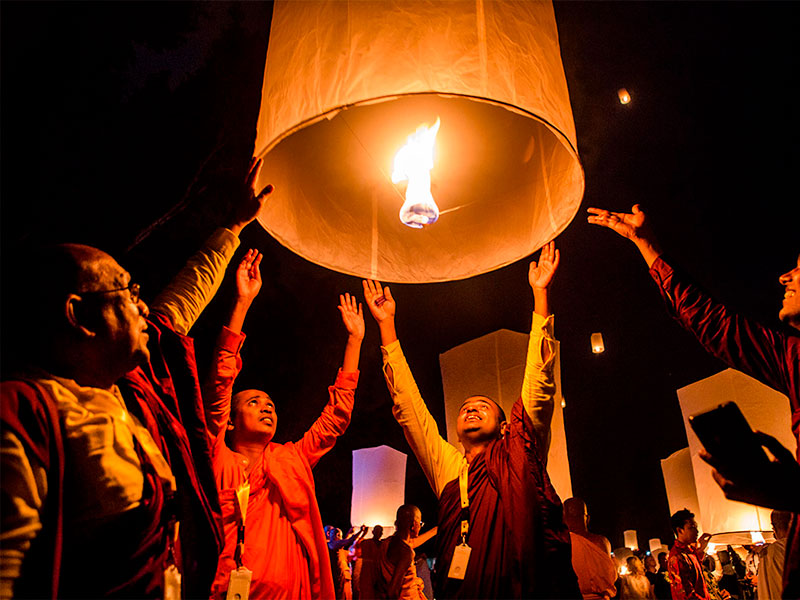
- Poya Days: Full moon days, celebrated every month, each having its own significance.
- Vesak: Occurring in May, commemorates the birth, enlightenment, and death of Buddha.
- Kandy Esala Perahera: One of the most famous festivals, usually taking place in July or August in the city of Kandy. It features colorful processions, traditional dances, and elaborately decorated elephants.
Tourist Seasons
Sri Lanka experiences two primary tourist seasons:
- Peak Season: December to March, ideal for the western and southern coasts as well as the Hill Country.
- Off-Peak Season: April to September, perfect for exploring the northern and eastern regions.
Advantages of Each Season
Peak Season:
- Best time for beach activities and water sports.
- Ideal for exploring cultural sites in optimal weather conditions.
Off-Peak Season:
- Less crowded, offering a more relaxed atmosphere.
- Lower prices on accommodations and activities.
Conclusion
Choosing the best time to visit Sri Lanka depends on a variety of factors including your interests, the regions you want to explore, and your tolerance for varying weather conditions. Whether you’re looking to immerate yourself in local festivals, explore the island’s diverse landscapes, or simply relax on its stunning beaches, Sri Lanka has something to offer year-round. But understanding the dynamics of its seasons can help you make the most of your trip.
Stay tuned for more invaluable tips and insights in this comprehensive Sri Lanka Travel Guide, aimed at helping you plan the perfect island getaway.
Visa and Travel Requirements: Your Gateway to Sri Lanka
A journey to Sri Lanka promises an exhilarating blend of natural beauty, historical intrigue, and cultural richness. However, before setting foot in this tropical paradise, it’s crucial to have your travel documentation sorted. In this guide, we provide an in-depth look into the types of visas available, how to apply for them, and other essential entry requirements for Sri Lanka.
Types of Visas
Sri Lanka offers several types of visas, catering to various travel needs:
Tourist Visa
The most common type, generally valid for 30 days with the option for extensions. Ideal for sightseeing, vacationing, and even short business visits.
Business Visa
If your trip has a commercial purpose such as attending meetings or conferences, consider applying for a Business Visa.
Transit Visa
A short-term visa, usually up to 48 hours, for travelers who are stopping over in Sri Lanka en route to another destination.
Multiple Entry Visa
For travelers who need to enter and exit Sri Lanka multiple times within a specific period.
How to Apply
Online (ETA)
Most travelers opt for the Electronic Travel Authorization (ETA), a simplified online procedure that usually grants approval within 24 hours. All you need to do is fill out a form on the official ETA website, pay the fee, and wait for confirmation via email.
On Arrival
Although it’s advisable to secure your visa beforehand, Sri Lanka does offer visas on arrival for certain nationalities. Make sure to carry the requisite cash and documents.
Through an Embassy or Consulate
If you prefer a more traditional route or need a specialized visa, you can apply through a Sri Lankan embassy or consulate in your home country.
Required Documents
Regardless of the visa type, you’ll generally need the following:
- A valid passport with at least six months’ validity from the date of arrival.
- Proof of onward or return flight tickets.
- Proof of sufficient funds to cover your stay.
- Confirmed accommodation details.
Fees and Extensions
Visa fees vary depending on your nationality and the type of visa. Extensions can usually be obtained from the Department of Immigration and Emigration in Colombo, for an additional fee.
Other Entry Requirements
Health Precautions
Certain regions may require vaccination certificates for diseases like Yellow Fever or Polio, especially if you’re arriving from an endemic area.
Restricted Areas
Some parts of Sri Lanka may have restricted access due to security reasons. Make sure to secure the necessary permits if you wish to visit such areas.
Conclusion
Navigating the visa and entry requirements for Sri Lanka is generally a straightforward process, designed to facilitate the steady flow of tourists eager to explore this breathtaking island nation. Ensuring that you meet all the criteria and have the proper documentation will make for a smoother, more enjoyable travel experience. Stay tuned as we unfold more aspects of traveling to Sri Lanka in this comprehensive Sri Lanka Travel Guide, aimed at equipping you with all you need for an unforgettable journey.
Currency and Budget: Navigating Finances in Sri Lanka
For travelers eager to explore the Pearl of the Indian Ocean, understanding the currency and budgetary nuances is crucial for a hassle-free experience. Whether you’re a budget backpacker or a luxury tourist, Sri Lanka offers a range of options to suit all wallets. In this comprehensive section, we’ll walk you through the currency used, tips on exchanging money, and provide an overview of the cost of living for tourists.
Currency: The Sri Lankan Rupee
The currency in Sri Lanka is the Sri Lankan Rupee, abbreviated as LKR or symbolized as Rs. Notes come in denominations of 20, 50, 100, 500, 1000, 2000, and 5000, while coins are available in values of 1, 2, 5, and 10 rupees.
Currency Exchange
Changing your money into Sri Lankan Rupees is a straightforward process:
- Airports: Bandaranaike International Airport has several currency exchange counters, open 24/7.
- Banks: Most towns have banks where you can exchange currency. Be sure to carry your passport for identification.
- Authorized Money Changers: Located in major tourist areas, they usually offer competitive rates.
- ATMs: Widely available, ATMs often provide a reasonable exchange rate. However, be cautious of transaction fees.
Tip: Always request a receipt when exchanging money to ensure an official record of the transaction.
Overview of Cost of Living
Understanding the general cost of living can significantly help you budget your trip:
Accommodation
- Budget: Guesthouses and hostels are widely available, ranging from $10 to $30 per night.
- Mid-Range: Boutique hotels and three-star establishments typically cost between $40 and $100.
- Luxury: Five-star resorts and villas can go upwards of $150 per night.
Food and Dining
- Street Food: A filling meal can cost as little as $1 to $3.
- Restaurants: A meal at a mid-range restaurant may set you back $5 to $15.
- Fine Dining: Expect to pay $20 and above.
Transportation
- Public Transport: Extremely budget-friendly, with bus fares starting at less than $0.50.
- Taxis and Ride-Sharing: Generally affordable but can add up for longer distances. Always negotiate the price upfront or use a metered cab.
Activities and Attractions
- Natural Sites: Many beaches and natural sites are free, but national parks may charge an entrance fee of $15 to $25.
- Cultural Sites: Expect to pay around $10 to $30 for significant cultural landmarks like Sigiriya or the Temple of the Tooth.
Budgeting Tips
- Plan Ahead: Research and book activities and accommodations in advance for potential discounts.
- Use Local Transport: When feasible, using buses or trains can significantly cut costs.
- Eat Local: Local cuisine is not only delicious but often much more affordable than Western options.
Conclusion
Armed with this knowledge on currency and budgeting, you’ll be well-equipped to make the most of your Sri Lankan adventure without breaking the bank. Whether you’re exploring ancient ruins, relaxing on sun-kissed beaches, or sampling local delicacies, Sri Lanka offers a wealth of experiences that can be tailored to fit any budget.
Stay tuned for more practical insights in this comprehensive Sri Lanka Travel Guide, designed to ensure you have a memorable and economically savvy trip.
Getting Around: Your Guide to Transportation in Sri Lanka
Navigating through Sri Lanka can be an adventure in itself, offering a fascinating blend of traditional and modern modes of transportation. From the iconic tuk-tuks weaving through city traffic to scenic train journeys that take you through lush landscapes, Sri Lanka’s transport options are as diverse as the island itself. In this section, we aim to provide you with a comprehensive overview of the available modes of transport, helping you choose what best suits your travel needs and budget.
Tuk-Tuks: The Quintessential Sri Lankan Experience
Arguably the most iconic mode of transport in Sri Lanka, tuk-tuks are three-wheeled motorized rickshaws that are ideal for short distances. While they may not be the most comfortable, the experience is one-of-a-kind.
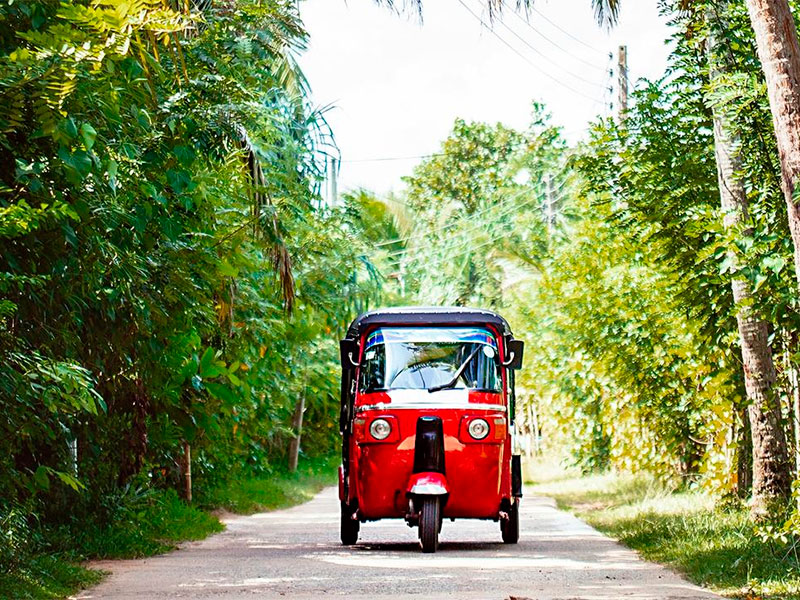
- Cost: Fares generally range from Rs. 50 to Rs. 300, depending on the distance.
- Tip: Always negotiate the fare before your journey or opt for a metered tuk-tuk.
Buses: Economical and Extensive
Sri Lanka boasts an expansive bus network, connecting even the most remote areas of the island.
- Public Buses: Extremely affordable, starting at fares as low as Rs. 20.
- Luxury Buses: Air-conditioned and more comfortable, these buses are a great option for longer journeys.
Trains: Scenic and Leisurely
Train travel in Sri Lanka is not only economical but also offers some of the most breathtaking scenic routes in the world.
- Popular Routes: The train journey from Kandy to Ella is renowned for its stunning landscapes.
- Classes: Options range from 3rd class to 1st class compartments, each offering a different level of comfort and amenities.
Private Cars and Taxis
If you’re looking for comfort and convenience, hiring a private car or taxi is the way to go.
- Cost: A private car can range from $50 to $100 per day, including a driver.
- Apps: Ride-sharing apps like PickMe and Uber are available in major cities for easier navigation.
Domestic Flights and Ferries
For those short on time or interested in covering large distances quickly, domestic flights are available, albeit at a higher cost. Ferries can also be a unique way to explore the coastline and nearby islands.
Cycling and Walking
Sri Lanka’s natural beauty and relatively compact size make it an excellent destination for cycling and walking, especially in tourist areas like Galle Fort and the Cultural Triangle.
Accessibility
Tourists with mobility issues will find Sri Lanka gradually becoming more accessible, with options like wheelchair-accessible vehicles and facilities in major tourist areas.
Conclusion
Getting around Sri Lanka offers a multitude of options for every kind of traveler. Whether you’re hopping on a tuk-tuk for a quick ride to the market, savoring the landscapes from a train, or cruising in the comfort of a private car, Sri Lanka’s diverse modes of transport enhance the overall travel experience.
Stay tuned as we continue to unravel the many facets of traveling in Sri Lanka in this comprehensive guide, designed to make your trip as smooth and enjoyable as possible.
Top Destinations: Unmissable Spots in Sri Lanka
If there’s one thing Sri Lanka isn’t short on, it’s destinations that captivate the senses and tug at the soul. This vibrant island nation is a tapestry of experiences, each more captivating than the last. From bustling cities rich in history to pristine beaches, and from ancient ruins to wildlife sanctuaries, Sri Lanka has it all. In this section, we’ll guide you through must-visit destinations that offer a glimpse into the multifaceted charm of Sri Lanka.
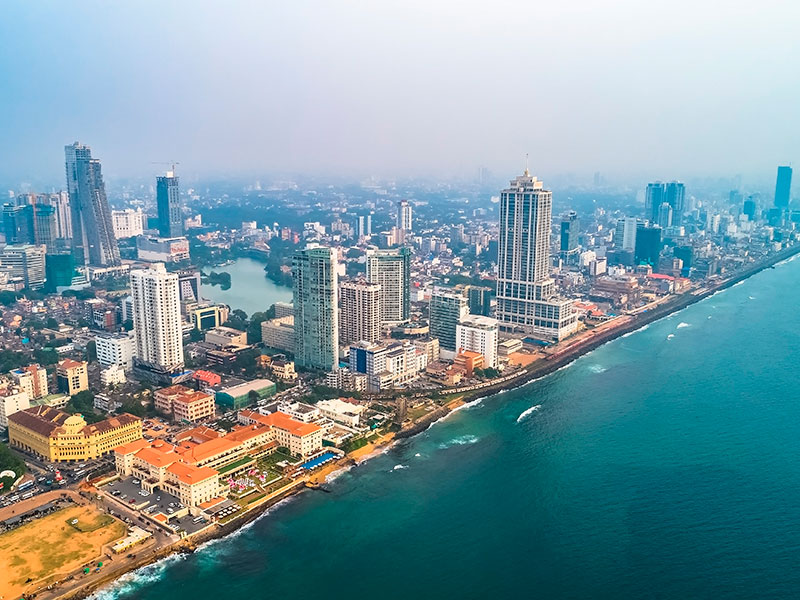
Colombo: The Cosmopolitan Capital
- Highlights: Modern skyscrapers meet colonial architecture in a city that boasts a vibrant art scene, exquisite dining, and bustling markets.
- Must-See: The Colombo National Museum, Gangaramaya Temple, and the Dutch Hospital Shopping Precinct.
Kandy: The Cultural Epicenter
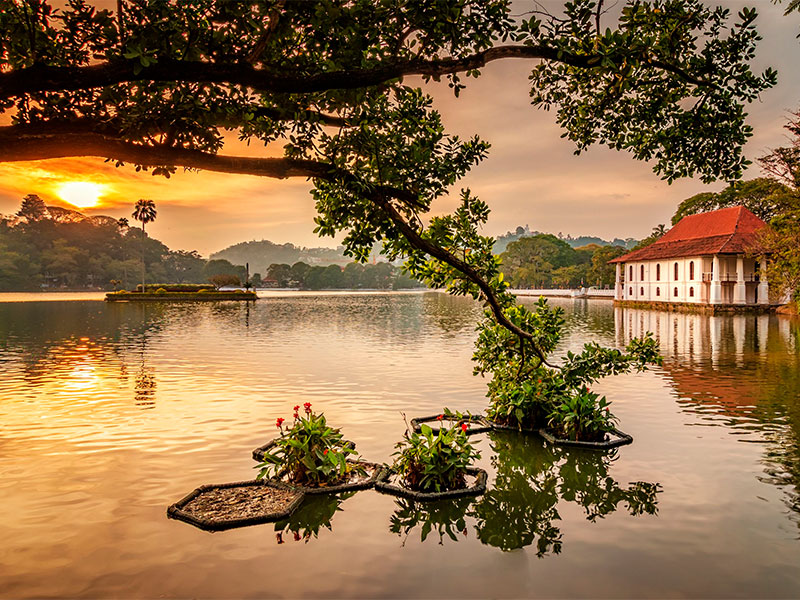
- Highlights: Located in the Central Highlands, Kandy is famous for its lush tea plantations and rich cultural heritage.
- Must-See: The Sacred Temple of the Tooth Relic, Kandy Lake, and the Royal Botanical Gardens.
Galle: A Coastal Gem
- Highlights: Known for its Dutch colonial buildings, Galle is a coastal city offering stunning ocean views.
- Must-See: Galle Fort, the Maritime Museum, and beautiful beaches like Unawatuna and Hikkaduwa.
Ella: The Scenic Haven
- Highlights: With its cooler climate and beautiful landscapes, Ella is a haven for nature lovers.
- Must-See: Ella Rock, Nine Arch Bridge, and Little Adam’s Peak.
Anuradhapura: The Ancient City
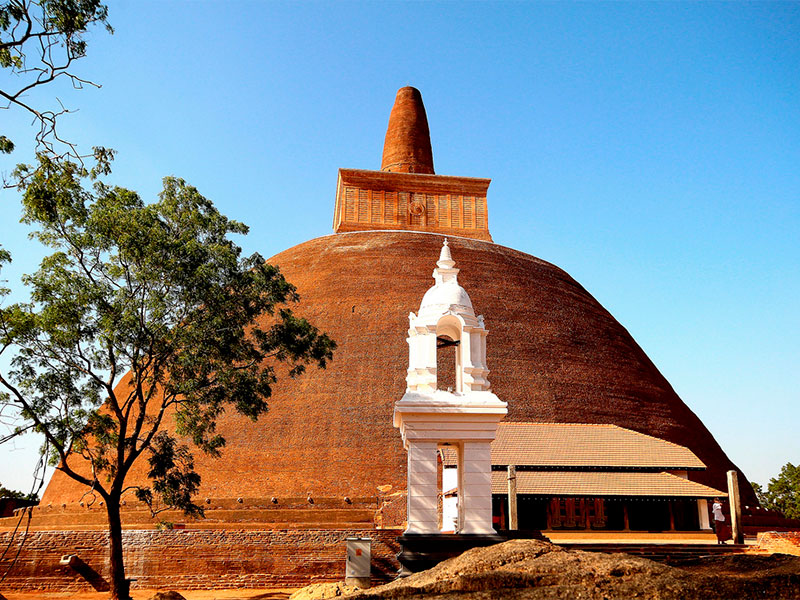
- Highlights: One of the ancient capitals of Sri Lanka, Anuradhapura is rich in well-preserved ruins and stupas.
- Must-See: Ruwanwelisaya Stupa, Isurumuniya Temple, and the Sri Maha Bodhi Tree.
Nuwara Eliya: The “Little England”
- Highlights: Known for its cool climate and verdant tea plantations, it’s often called the “Little England” of Sri Lanka.
- Must-See: Gregory Lake, Hakgala Botanical Gardens, and the Seetha Amman Temple.
Arugam Bay: The Surfing Capital
- Highlights: Famed for its surfing spots, Arugam Bay promises an adrenaline-pumping experience.
- Must-See: Main Point, Whiskey Point, and Peanut Farm for surfing aficionados.
Yala National Park: A Wildlife Adventure
- Highlights: One of Sri Lanka’s premier wildlife sanctuaries, Yala is home to a variety of fauna including leopards, elephants, and numerous bird species.
- Must-See: A safari tour to spot the elusive leopard and the diverse wildlife of the park.
Conclusion
Whether you’re a history buff, a nature enthusiast, or a beach lover, Sri Lanka has something to offer for everyone. Each destination is a unique chapter in the rich tapestry that makes up this extraordinary island nation.
Stay tuned as we delve deeper into what makes Sri Lanka a remarkable tourist destination in this all-encompassing guide. Your adventure in this incredible land is bound to be one for the books.
Culture and Language: Embracing the Sri Lankan Way
In Sri Lanka, culture and language intertwine in a captivating blend that enriches the traveler’s experience. From its rich tapestry of customs to the melodic lilt of its local languages, the island offers a deep well of cultural richness waiting to be explored. In this section, we aim to equip you with essential knowledge about Sri Lanka’s customs, etiquette, and even some basic phrases to make your trip more rewarding.
Language: A Melodic Blend
The official languages of Sri Lanka are Sinhalese and Tamil, while English is also widely spoken and understood, especially in urban areas and tourist destinations.
Basic Phrases in Sinhalese
- Hello: Ayubowan
- Thank You: Istuti
- Yes: Ow
- No: Naha
Basic Phrases in Tamil
- Hello: Vanakkam
- Thank You: Nandri
- Yes: Aamaam
- No: Illai
Customs and Traditions
- Religious Diversity: Sri Lanka is home to a myriad of religious beliefs including Buddhism, Hinduism, Islam, and Christianity.
- Festivals: With such diversity, the island celebrates numerous festivals such as Vesak (Buddhist), Diwali (Hindu), Eid (Muslim), and Christmas (Christian).
- Dress Code: Modesty is valued, especially when visiting religious sites. Cover your shoulders and knees as a mark of respect.
Etiquette Tips
Greeting
- Traditional Sri Lankan greetings involve pressing your palms together and bowing slightly, although handshakes are also widely accepted.
Dining
- Eating with your hands is common, but always use your right hand as the left is considered impolite for eating.
- If invited to a home, it’s customary to bring a small gift as a token of appreciation.
Photography
- Always ask for permission before taking photos, especially in religious or culturally sensitive areas.
Tipping
- While not obligatory, tipping is appreciated. A general rule is to tip around 10% of the total bill in restaurants and for services.
Shopping and Souvenirs
- Bargaining is common in markets but do so respectfully.
- Souvenirs like Ceylon Tea, Batik fabric, and traditional masks make for excellent keepsakes.
Conclusion
Understanding the culture and language of Sri Lanka not only enriches your travel experience but also bridges the gap between you and the local community. A few phrases and an appreciation for local customs can go a long way in making your journey more fulfilling and memorable.
As we continue to explore Sri Lanka in this comprehensive guide, we hope to provide you with all the tools you need for an unforgettable trip. Stay tuned for more insightful tips and recommendations.
Cuisine and Food: A Gastronomic Journey Through Sri Lanka
If you’re the kind of traveler who believes that food is not just a necessity but an integral part of the journey, then Sri Lanka will not disappoint. This island nation offers a culinary landscape as diverse and colorful as its natural beauty and cultural heritage. From spicy curries to sweet treats, Sri Lanka’s gastronomy is an adventure in itself. In this section of our Sri Lanka Travel Guide, we’ll introduce you to popular dishes, delectable street foods, and the best spots to find authentic Sri Lankan cuisine.
Popular Dishes: A Symphony of Flavors
Rice and Curry
- Description: The cornerstone of Sri Lankan cuisine, typically consisting of steamed rice accompanied by a variety of curries.
- Where to Try: Virtually every local restaurant, from high-end establishments in Colombo to rural roadside eateries.
String Hoppers
- Description: Rice flour pressed into noodle form and then steamed, often served with curry or coconut sambol.
- Where to Try: Breakfast buffets in hotels and local eateries.
Kottu Roti
Kottu Roti is a popular Sri Lankan street food dish made from chopped flatbread, often a type of roti, that is stir-fried with a variety of ingredients such as vegetables, spices, eggs, and meat or seafood. The dish is known for its unique preparation method, where the ingredients are chopped and mixed together on a flat griddle using two metal blades. The sound of the blades chopping against the griddle is a characteristic element of the experience when ordering Kottu Roti from a street vendor.
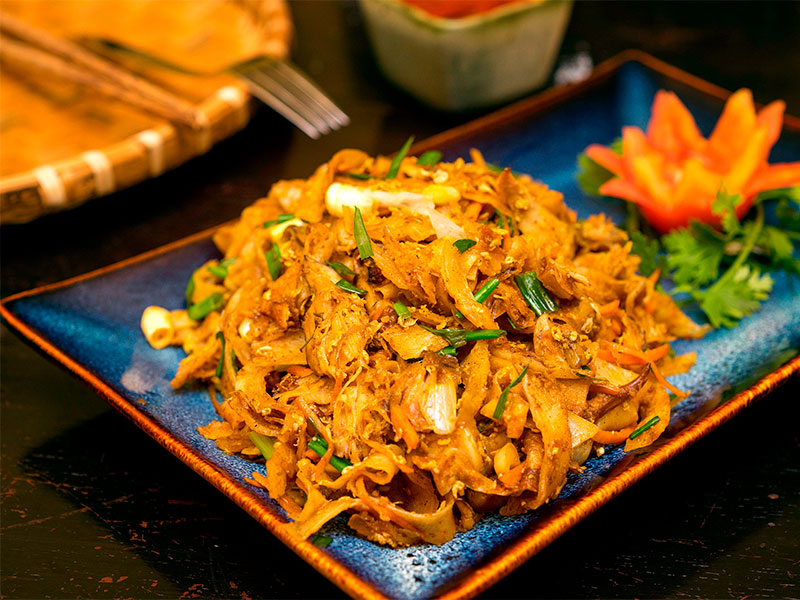
- Description: A scrumptious blend of chopped flatbread, vegetables, and meat or eggs.
- Where to Try: Street food stalls, especially in the evenings.
Street Food: Quick and Delicious
Egg Hoppers
- Description: A bowl-shaped pancake made from fermented rice flour and coconut milk, featuring a soft-boiled egg in the center.
- Where to Try: Morning street markets.
Fish Buns
- Description: Fish mixed with spices, stuffed into dough, and then baked.
- Where to Try: Bakeries and roadside stalls.
Vadai
- Description: Deep-fried snacks made from lentils or chickpeas.
- Where to Try: Street vendors, especially in busy market areas.
Where to Find Authentic Sri Lankan Food
Colombo
- Ministry of Crab: Known for its crab dishes and located in the Old Dutch Hospital complex.
- Upali’s: Renowned for its authentic Sri Lankan fare, especially the different varieties of curry.
Kandy
- Theva Cuisine: Offers both traditional and modern Sri Lankan dishes, overlooking a stunning mountainous landscape.
Galle
- Lucky Fort Restaurant: Popular for its 10-curry rice and curry meal.
Ella
- Café Chill: A fusion of local and international dishes, ideal for travelers looking to mix things up.
Conclusion
Sri Lanka’s culinary landscape offers a plethora of choices for foodies. From mouthwatering street food to sophisticated dining experiences, the island provides a gastronomic adventure that’s sure to tantalize your taste buds. As we continue this comprehensive guide to Sri Lanka, stay tuned for more insights and tips that will make your trip unforgettable.
Accommodation: Where to Stay in Sri Lanka
Finding the perfect place to stay is an essential part of any travel experience, and Sri Lanka offers a plethora of options to suit every budget and taste. Whether you’re looking for a luxurious hideaway or a budget-friendly hostel, the country provides an array of accommodations that cater to various needs. In this segment, we’ll walk you through the types and range of accommodations you can expect to find in this exotic island nation.
Budget Accommodations: Comfort without Breaking the Bank
Hostels
- Description: Ideal for backpackers and solo travelers, hostels offer basic amenities and shared dormitory-style rooms.
- Where to Find: Common in tourist hotspots like Colombo, Kandy, and Galle.
Guesthouses
- Description: Private homes converted into lodgings, guesthouses offer a more intimate experience.
- Where to Find: Widely available throughout the country, especially in less commercialized areas.
Homestays
- Description: Live with a local family and experience Sri Lankan culture firsthand.
- Where to Find: Mostly available in rural areas and small towns.
Mid-Range Accommodations: A Balance of Cost and Comfort
Boutique Hotels
- Description: These hotels offer personalized services and unique themes, usually with fewer rooms for a more intimate setting.
- Where to Find: Popular in cities and tourist destinations such as Colombo, Galle, and Ella.
B&Bs
- Description: Bed and Breakfasts provide a cozy, home-like atmosphere, often with the added benefit of a home-cooked meal.
- Where to Find: Scattered throughout the country, particularly in scenic regions like Nuwara Eliya.
Luxury Accommodations: The Epitome of Elegance
Five-Star Hotels
- Description: Think opulence, panoramic views, and world-class services.
- Where to Find: Mainly in Colombo and major tourist spots like Kandy and Galle.
Resorts
- Description: Offering a full range of services and amenities like spas, pools, and gourmet dining.
- Where to Find: Coastal areas such as Mirissa, Bentota, and Negombo.
Eco-Lodges
- Description: Combines luxury with sustainability, often located in natural settings like jungles or near wildlife parks.
- Where to Find: Areas close to natural attractions like Yala National Park and Sigiriya.
Conclusion
Choosing the right accommodation can make or break your trip, and luckily, Sri Lanka offers something for everyone. From budget-friendly hostels to luxurious resorts, the range of options ensures that every traveler can find their ideal lodging. As we continue this comprehensive guide, we aim to offer you all the tools and insights you need to make your Sri Lankan adventure unforgettable.
Activities and Experiences: Discover the Thrills of Sri Lanka
Sri Lanka is not just a feast for the eyes; it’s an exhilarating playground for outdoor enthusiasts and adventure seekers. With landscapes that range from sun-soaked beaches to misty mountains and dense jungles, the country offers a myriad of activities and experiences that allow you to immerse yourself in its natural beauty and cultural depth. In this section, we will guide you through the outdoor adventures, wildlife encounters, and unique local experiences that await you on this incredible island.
Outdoor Adventures: Get Your Adrenaline Pumping
Surfing
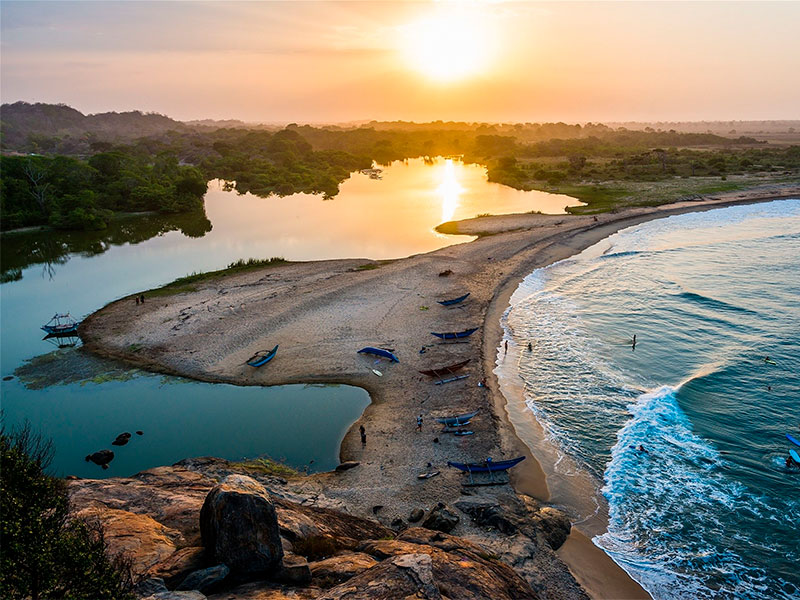
- Description: Catch world-class waves along Sri Lanka’s southern coast.
- Where to Try: Arugam Bay, Mirissa, and Hikkaduwa.
Hiking and Trekking
- Description: Explore the lush landscapes on foot, from gentle hikes to challenging mountain treks.
- Where to Try: Adam’s Peak, Ella Rock, and the Knuckles Mountain Range.
White-Water Rafting
- Description: Experience the thrill of navigating through rapids.
- Where to Try: Kitulgala.
Wildlife Encounters: Nature’s Spectacular Show
Elephant Safaris
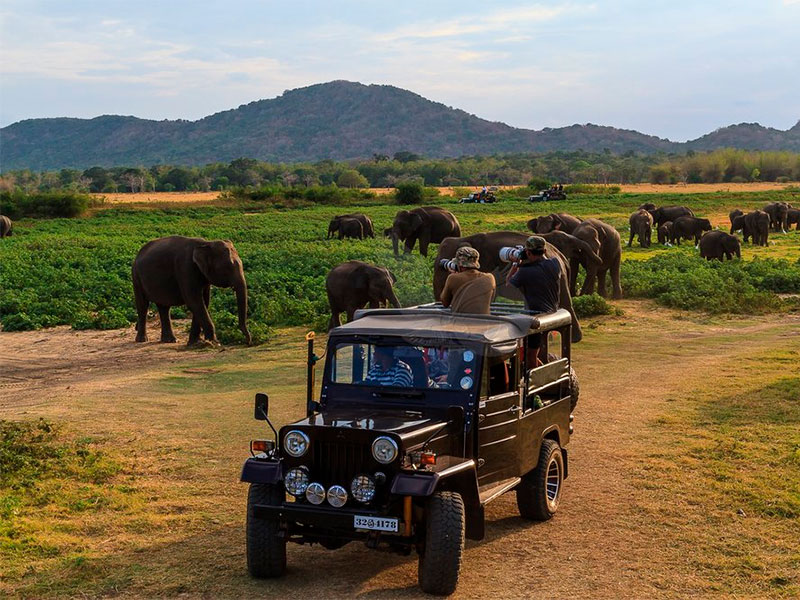
- Description: Witness these majestic creatures in their natural habitats.
- Where to Try: Minneriya National Park, Udawalawe National Park.
Whale Watching
- Description: Observe the ocean’s gentle giants on a boat excursion.
- Where to Try: Mirissa, Trincomalee.
Bird Watching
- Description: Discover a diverse array of bird species, both endemic and migratory.
- Where to Try: Sinharaja Rainforest, Kumana National Park.
Unique Local Experiences: Immerse in Sri Lankan Culture
Tea Plantation Visits
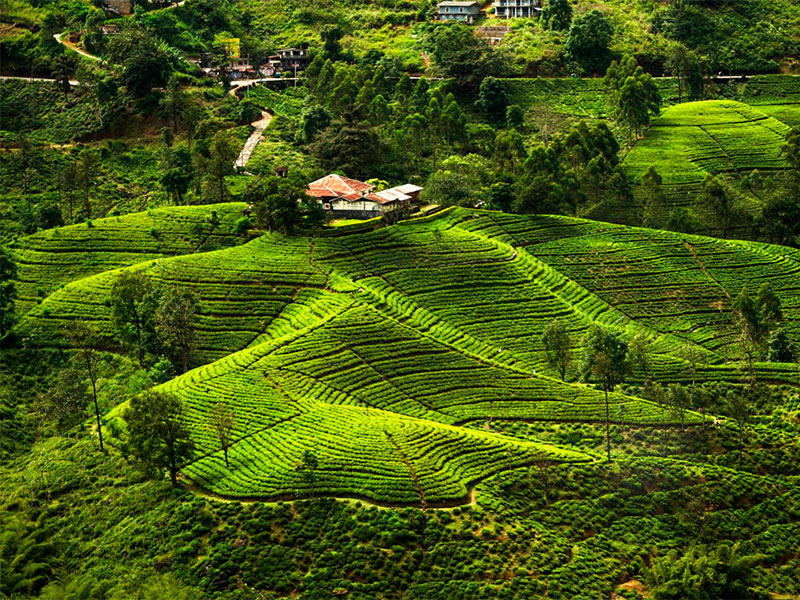
- Description: Learn the art of tea-making and walk through lush plantations.
- Where to Try: Nuwara Eliya, Kandy.
Ayurvedic Treatments
- Description: Experience the ancient holistic healing practices of Ayurveda.
- Where to Try: Wellness centers in Bentota, Kandy, and Negombo.
Village Tours
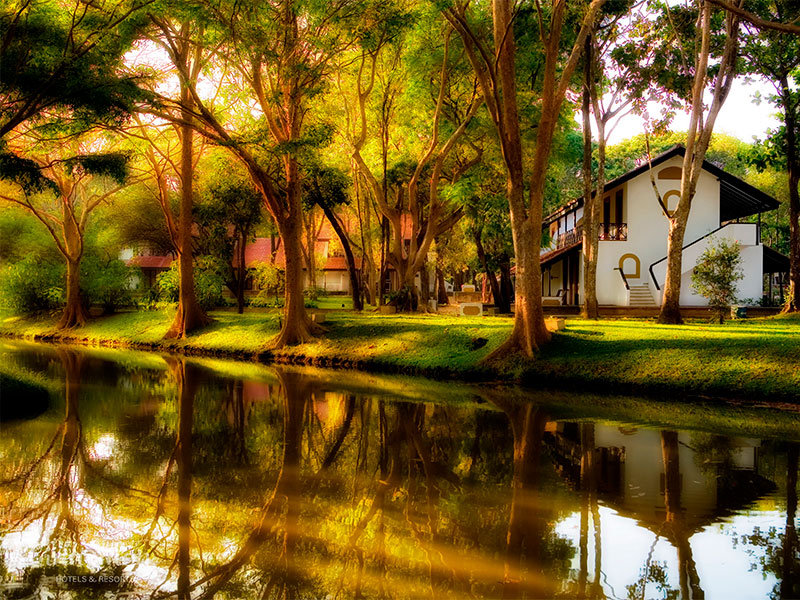
- Description: Get a firsthand look at rural life and engage in activities like fishing or pottery.
- Where to Try: Sigiriya, Habarana.
Conclusion
From riding the waves of the Indian Ocean to summiting mist-shrouded peaks, and from getting up close and personal with Sri Lanka’s diverse wildlife to delving into its rich cultural practices, Sri Lanka offers an unparalleled range of activities and experiences. As we conclude this comprehensive guide, we’re confident that you’ll find Sri Lanka to be a land of endless possibilities, each experience contributing to an unforgettable journey.
Activities and Experiences: Your Guide to Sri Lanka’s Boundless Adventures
Sri Lanka is a treasure trove of experiences, offering a kaleidoscope of activities that cater to all kinds of travelers. With an incredible array of natural landscapes, from crystalline beaches to towering mountains and lush jungles, Sri Lanka invites you to step out of your comfort zone. In this section, we will journey through the many outdoor adventures, wildlife spectacles, and unique cultural experiences that make Sri Lanka a must-visit destination.
Outdoor Adventures: Unleash Your Inner Adventurer
Scuba Diving and Snorkeling
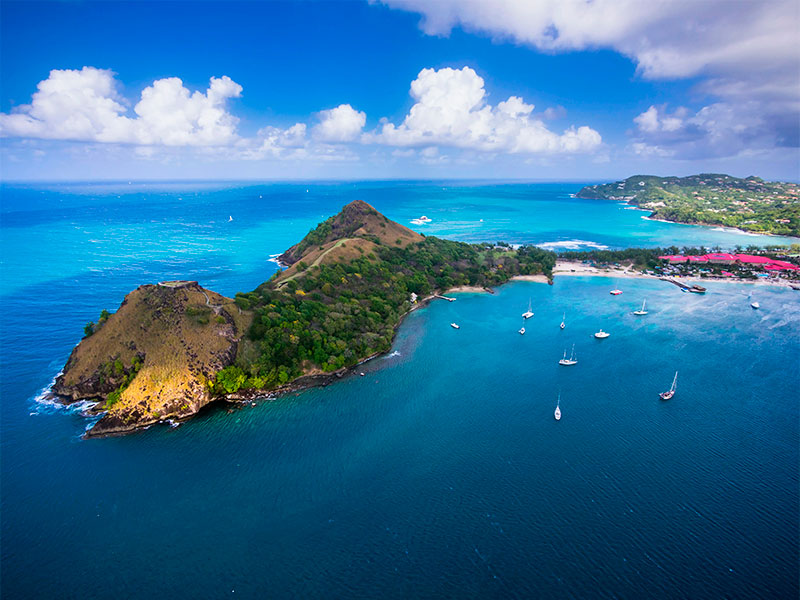
- Description: Explore the mesmerizing underwater world of coral reefs and exotic marine life.
- Where to Try: Unawatuna, Trincomalee, and Pigeon Island.
Rock Climbing
- Description: Conquer vertical challenges and enjoy panoramic views.
- Where to Try: Sigiriya, Bambarakanda Falls.
Cycling Tours
- Description: Pedal through idyllic villages, historical sites, and scenic landscapes.
- Where to Try: Polonnaruwa, Anuradhapura.
Wildlife Experiences: The Call of the Wild
Leopard Safaris
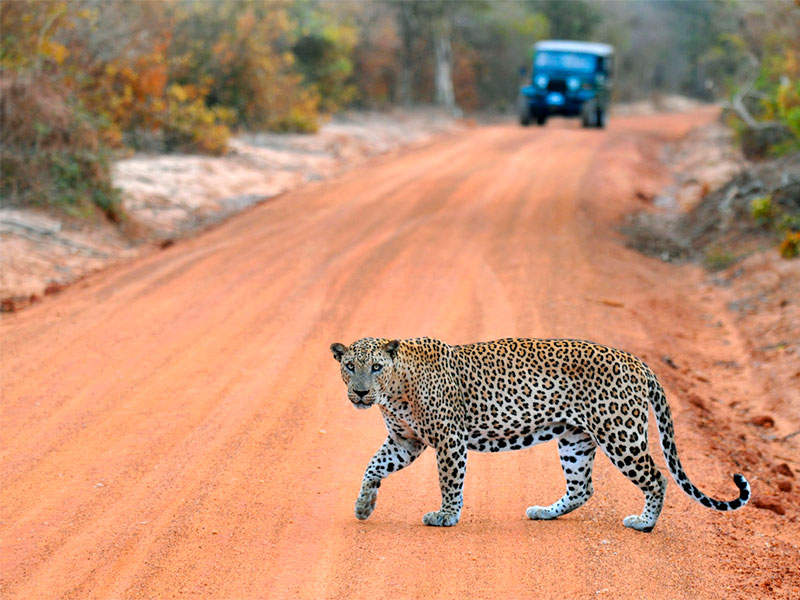
- Description: Spot the elusive leopard in its natural environment.
- Where to Try: Yala National Park, Wilpattu National Park.
Turtle Hatcheries
- Description: Witness the miracle of life as baby turtles make their first journey to the sea.
- Where to Try: Kosgoda, Rekawa.
Mangrove Tours
- Description: Explore the ecologically vital mangrove forests by boat.
- Where to Try: Bentota, Madu Ganga River.
Unique Local Experiences: A Cultural Odyssey
Traditional Dance Performances
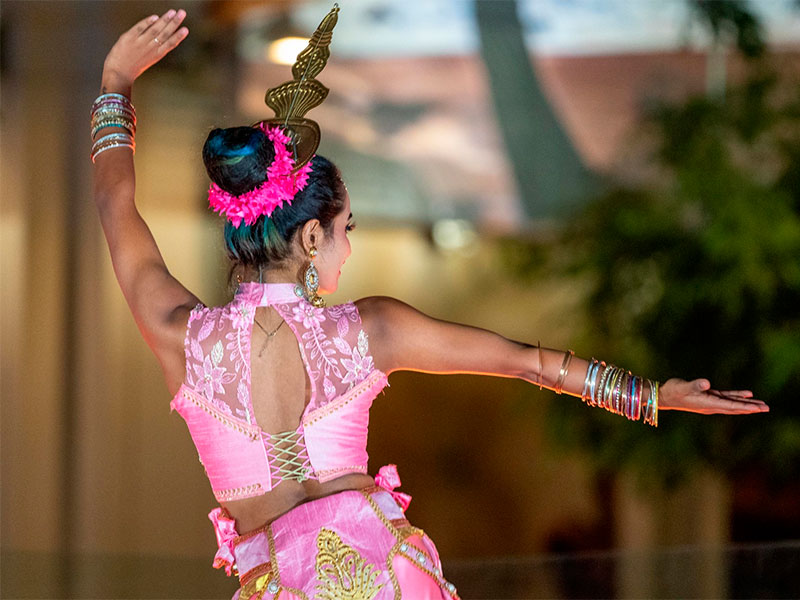
- Description: Be enthralled by the vibrant costumes and rhythmic movements of traditional Sri Lankan dance.
- Where to Try: Kandy, Colombo.
Cooking Classes
- Description: Master the secrets of Sri Lankan cuisine with a hands-on cooking class.
- Where to Try: Colombo, Galle, Ella.
Temple Visits
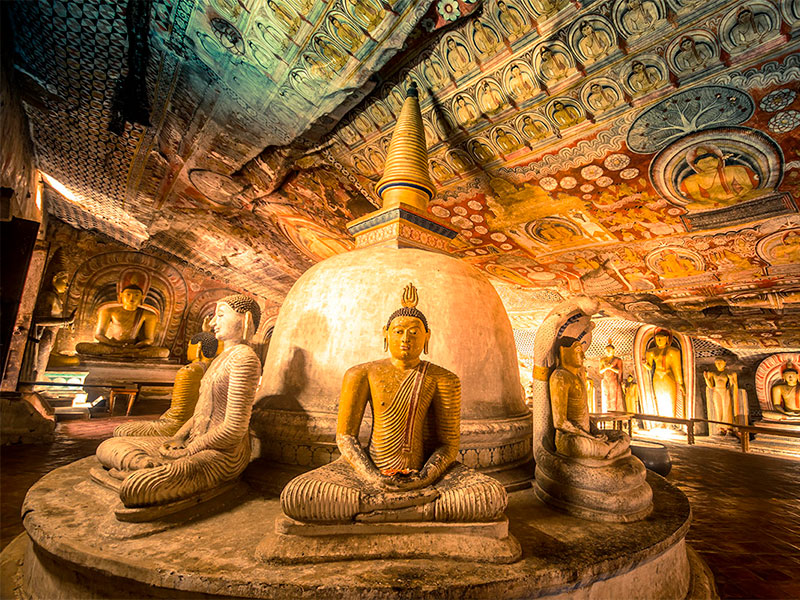
- Description: Engage in spirituality and discover the religious tapestry of Sri Lanka.
- Where to Try: Dambulla Cave Temple, Temple of the Tooth in Kandy.
Conclusion
Sri Lanka is a country of endless experiences, seamlessly blending natural thrills with enriching cultural activities. Whether you’re an adrenaline junkie, a nature lover, or a cultural enthusiast, Sri Lanka is your ultimate playground. As we wrap up this comprehensive travel guide, we hope to have ignited your wanderlust and provided you with a roadmap to an unforgettable Sri Lankan adventure.
Health and Safety: A Comprehensive Guide to a Secure Sri Lankan Journey
Staying healthy and safe is paramount when exploring any new destination, and Sri Lanka is no exception. With its diverse geography and climate, understanding the basics of health and safety is crucial for an enjoyable trip. From vaccinations and food safety to emergency contacts, this section aims to provide you with practical information to navigate any unforeseen situations during your Sri Lankan expedition.
Health Precautions: An Ounce of Prevention
Vaccinations
- Description: Ensure that you’re up-to-date with routine vaccinations like measles, mumps, and rubella. Additional vaccinations such as Typhoid and Hepatitis A & B are also recommended.
- Where to Consult: Consult your healthcare provider at least 4-6 weeks before your trip.
Food and Water Safety
- Description: Avoid street food and unfiltered water to minimize the risk of foodborne illnesses.
- Precautions: Stick to bottled water and consume hot, cooked meals from reputable restaurants.
Insect Protection
- Description: Be mindful of diseases like dengue and malaria, transmitted through mosquito bites.
- Precautions: Use insect repellents and wear long-sleeved clothing.
Safety Measures: Be Informed, Be Safe
Petty Crime
- Description: Pickpocketing and scams are relatively low but still possible, especially in crowded places.
- Precautions: Keep your belongings secure and be vigilant in public areas.
Public Transport
- Description: Public transport is generally safe, but overcrowding can be an issue.
- Precautions: Use licensed taxis and official bus services whenever possible.
Natural Disasters
- Description: Sri Lanka experiences occasional flooding and landslides.
- Precautions: Stay updated on local weather reports and heed official advisories.
Emergency Contacts: Keep These Handy
- Police: Dial 119
- Fire Department: Dial 110
- Ambulance and Hospital Services: Dial 1990
Leading Hospitals
- National Hospital, Colombo: Offers a range of medical services and has an emergency unit.
- Asiri Central Hospital, Colombo: Equipped with modern healthcare facilities.
Travel Insurance: A Safety Net
Always opt for comprehensive travel insurance that covers medical emergencies, cancellations, and loss of property.
Conclusion
Ensuring your well-being while traveling in Sri Lanka requires some forethought, but it’s well worth it for the peace of mind it brings. Being prepared allows you to focus on what truly matters: experiencing the rich diversity, natural beauty, and cultural heritage that make Sri Lanka such an incredible destination. With this comprehensive guide to health and safety, you’re now better equipped to enjoy your Sri Lankan adventure with confidence.
Packing Tips: Your Ultimate Checklist for Sri Lanka
The allure of Sri Lanka’s diverse landscapes, cultural treasures, and thrilling activities means that packing for this island paradise can be a bit of a challenge. From the bustling city of Colombo to the sandy beaches of the south and the misty hills of the central region, what you pack can greatly enhance your overall travel experience. This comprehensive guide will help you assemble the perfect suitcase tailored for the season and the activities you plan to enjoy.
Seasonal Packing: Weather-Ready Essentials
For the Dry Season (December to April)
- Clothing: Lightweight, breathable fabrics, hats for sun protection, and a light jacket for the evenings.
- Footwear: Comfortable sandals and walking shoes.
For the Monsoon Season (May to August)
- Clothing: Quick-drying materials, waterproof jackets, and an extra set of clothes.
- Footwear: Water-resistant footwear suitable for muddy terrain.
For the Transitional Seasons (September to November)
- Clothing: Layering options including t-shirts, light sweaters, and a waterproof jacket.
- Footwear: Versatile shoes that are both comfortable for walking and suitable for occasional rain.
Activity-Based Packing: Gear Up for Adventure
For Beach Activities
- Essentials: Sunscreen, swimwear, beach towel, and a wide-brimmed hat.
For Trekking and Hiking
- Essentials: Sturdy hiking boots, a refillable water bottle, and a backpack with multiple compartments.
For Wildlife Safaris
- Essentials: Binoculars, a camera with a powerful zoom lens, and light-colored clothing to blend in with the surroundings.
For Cultural Sightseeing
- Essentials: Lightweight shawls or scarves for temple visits, and a small bag for carrying essentials while exploring.
Miscellaneous Must-Haves
- Power Adapter: Sri Lanka uses Type D and G electrical sockets.
- First Aid Kit: Basic first aid items like antiseptics, band-aids, and pain relievers.
- Personal Care Items: Travel-sized toiletries including toothpaste, shampoo, and body wash.
Conclusion
Packing for Sri Lanka doesn’t have to be a daunting task. All it takes is a little planning and awareness of what your trip entails. Whether you’re coming for the pristine beaches, lush hiking trails, exotic wildlife, or the rich cultural history, being prepared with the right items will ensure that you make the most of what this incredible island has to offer. Keep this ultimate packing checklist at your fingertips, and you’ll be well on your way to a memorable Sri Lankan adventure.
Itineraries: Make the Most of Your Sri Lankan Adventure
One of the most daunting aspects of planning any trip can be deciding how to allocate your precious time. Sri Lanka, with its abundant attractions and diverse landscapes, presents tourists with a plethora of options. From soaking up the sun on golden beaches to exploring ancient temples, and from hiking misty mountains to wildlife safaris, the opportunities are endless. This section aims to guide you through suggested itineraries based on the length of your stay, so you can experience the best that Sri Lanka has to offer.
Quick Escape: 3 to 5 Days
Day 1: Colombo
- Morning: Visit the Colombo National Museum and Independence Square.
- Afternoon: Take a tuk-tuk tour of the city and explore local markets.
Day 2: Kandy
- Morning: Travel to Kandy and visit the Temple of the Tooth.
- Evening: Attend a traditional Kandyan dance performance.
Day 3: Galle
- Morning: Depart for Galle and explore the Dutch Fort.
- Afternoon: Relax on Unawatuna Beach.
Optional Day 4: Bentota
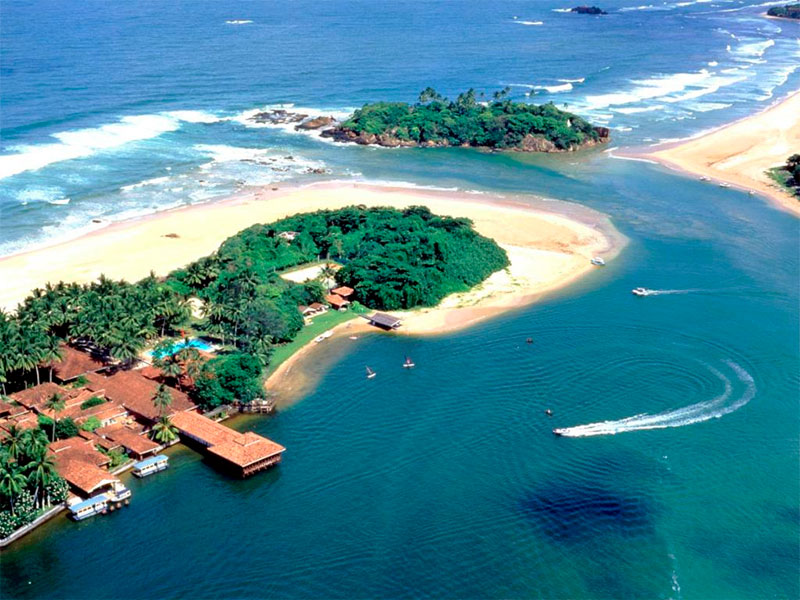
- Whole Day: River safari and water sports.
Optional Day 5: Negombo
- Whole Day: Visit fish markets and enjoy beachside relaxation.
Medium Stay: 6 to 10 Days
Add the Following Destinations:
Day 6: Ella
- Morning: Take a scenic train ride to Ella.
- Afternoon: Visit the Nine Arch Bridge and Ella Rock.
Day 7-8: Yala National Park
- Two Days: Wildlife safari and nature walks.
Day 9: Mirissa
- Whole Day: Whale watching and beach relaxation.
Day 10: Return to Colombo
- Afternoon: Last-minute shopping and departure.
Extended Journey: 11 to 14 Days
Add the Following Destinations:
Day 11-12: Trincomalee
- Two Days: Scuba diving, snorkeling, and beach relaxation.
Day 13: Anuradhapura
- Whole Day: Explore ancient ruins and sacred sites.
Day 14: Polonnaruwa
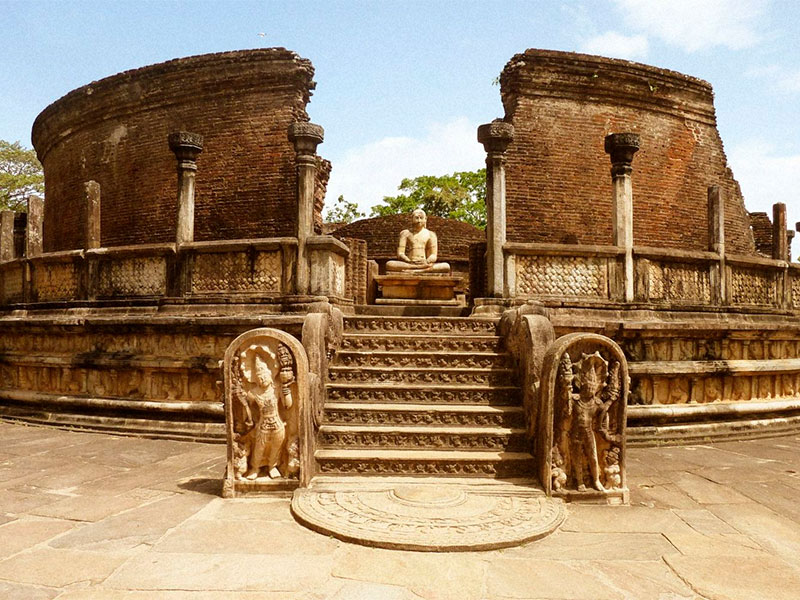
- Morning: Visit the ancient city and its ruins.
- Evening: Return to Colombo for departure.
Conclusion
No matter how long you plan to stay in Sri Lanka, this guide offers a starting point to craft your perfect itinerary. From quick getaways to extended vacations, these suggestions aim to help you experience a diverse and enriching range of activities and destinations. Customize these itineraries to match your interests and pace, and you’ll leave Sri Lanka with unforgettable memories and a deep connection to this beautiful island.
Conclusion: Why Sri Lanka Deserves a Spot on Your Travel Bucket List
As we reach the end of this comprehensive guide to traveling in Sri Lanka, it’s time to reflect on the myriad of reasons why this stunning island should be on everyone’s travel bucket list. The country is not just another tropical destination; it’s a kaleidoscope of experiences, each more captivating than the last, that blend to create an unforgettable journey. Whether you’re an adventure enthusiast, a history buff, a food connoisseur, or a nature lover, Sri Lanka has something tailor-made for you.
Unparalleled Diversity
The rich tapestry of landscapes, activities, and experiences is Sri Lanka’s most compelling selling point. In a matter of hours, you can go from surfing the blue waves on the southern beaches to hiking through lush, mist-covered mountains in the central highlands. The biodiversity in such a compact island is nothing short of miraculous, with opportunities to spot elephants, leopards, and exotic birds in well-preserved natural habitats.
Cultural Heritage
Sri Lanka’s deep-rooted cultural heritage is another reason it stands out as a travel destination. The island is home to ancient cities like Anuradhapura and Polonnaruwa, whose grand ruins provide a window into a bygone era. The religious diversity, manifesting in temples, churches, and mosques, is equally fascinating. The festivities, such as the famous Kandy Esala Perahera, are a spectacle you wouldn’t want to miss.
Culinary Delights
For food lovers, Sri Lankan cuisine offers a culinary adventure that tantalizes the taste buds with a unique blend of spices and flavors. From street food staples like kottu and hoppers to traditional curries served on banana leaves, the gastronomic experiences here are diverse and delicious.
Accessibility and Convenience
The island’s compact size, efficient public transport, and growing range of accommodations make it incredibly tourist-friendly. Whether you’re on a budget or looking for luxury, Sri Lanka accommodates every type of traveler.
Genuine Hospitality
The warmth and hospitality of the Sri Lankan people are the cherry on top. Tourists often rave about the kindness they encounter throughout their journey, making their trip feel like a home away from home.
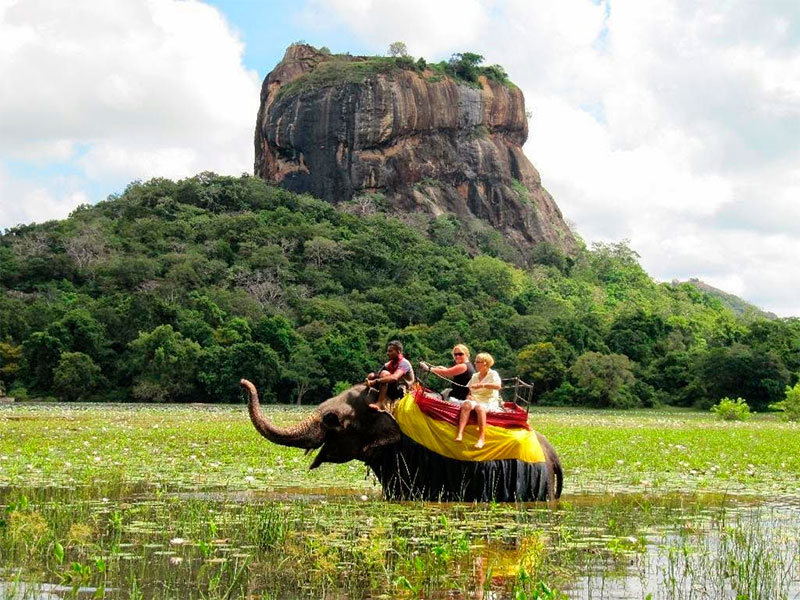
Safety and Ease of Travel
As outlined in our Health and Safety section, Sri Lanka is also a destination where tourists can feel secure. From comprehensive healthcare services to emergency numbers that are easy to remember, the country prioritizes the well-being of its visitors.
Final Thoughts
In summary, Sri Lanka is more than just a sum of its parts; it’s a symphony of experiences that resonate long after the journey has concluded. Its diverse landscapes, rich cultural heritage, exotic wildlife, mouth-watering cuisine, and unparalleled hospitality make it not just a destination to visit, but a world to discover. If Sri Lanka isn’t on your travel bucket list yet, this guide hopefully serves as an invitation to explore this enchanting island that promises not just a holiday, but a wealth of unforgettable experiences.
FAQs: Your Questions About Sri Lanka, Answered
In planning any trip, there are always those nagging questions that pop up. Whether you’re wondering about the best time to visit, local customs, or the island’s accessibility, we’ve compiled a list of frequently asked questions to ease your travel preparation for Sri Lanka.
1. What’s the Best Time to Visit Sri Lanka?
Answer: The best time to visit depends on the region you’re targeting. For the south and west coasts, December to April is ideal, while the east coast is perfect from May to September.
2. Do I Need a Visa to Enter Sri Lanka?
Answer: Most travelers require an Electronic Travel Authorization (ETA) which can be applied for online. Some countries are exempt, so check the official government website for the most current information.
3. What’s the Official Currency?
Answer: The Sri Lankan Rupee (LKR) is the official currency. ATMs are plentiful, and credit cards are widely accepted.
4. Is Sri Lanka Safe for Tourists?
Answer: Yes, Sri Lanka is generally considered safe for tourists. Always exercise common sense and take standard travel precautions.
5. What Languages Are Spoken?
Answer: Sinhala and Tamil are the official languages. English is widely understood in tourist areas.
6. Can I Use My Mobile Phone?
Answer: Yes, international roaming is available, but purchasing a local SIM card is more economical.
7. What Type of Food Can I Expect?
Answer: Sri Lankan cuisine is rich in spices and flavors, with rice and curry being a staple. Seafood is also popular along the coasts.
8. What’s the Dress Code at Religious Sites?
Answer: Cover your shoulders and knees when entering religious sites. Removing shoes is also customary.
9. Are Vaccinations Required?
Answer: No vaccinations are mandatory, but immunizations for Hepatitis A and Typhoid are recommended.
10. How to Get Around the Island?
Answer: Public transport is reliable, and options include buses, trains, and tuk-tuks. Private car rentals are also available.
11. What Wildlife Can I See?
Answer: Elephants, leopards, and a variety of bird species are common sights during safaris.
12. Is Tap Water Safe to Drink?
Answer: It’s advisable to stick to bottled or boiled water.
13. Can I Haggle at Markets?
Answer: Yes, haggling is common at local markets. However, be respectful and fair in your negotiations.
14. What Electrical Outlets are Used?
Answer: Type D and G plugs are standard. Carry a universal adapter if needed.
15. Is Tipping Customary?
Answer: Tipping is appreciated but not mandatory. A 10% tip in restaurants is standard.
Conclusion
We hope this FAQ section addresses any lingering queries you may have about visiting Sri Lanka. The island offers a rich tapestry of experiences, making it a must-visit destination for any avid traveler. While this guide aims to be comprehensive, always double-check any information to ensure it’s current during your time of travel.

